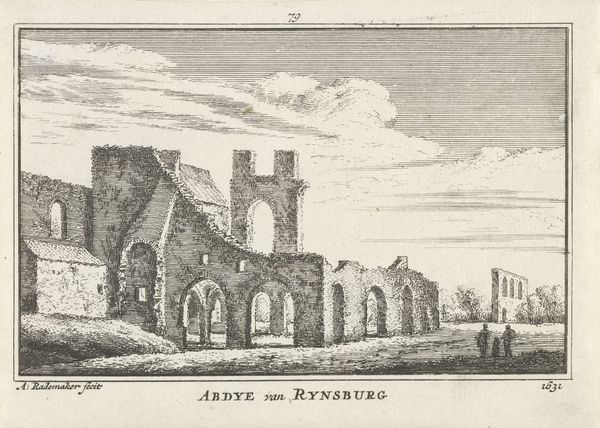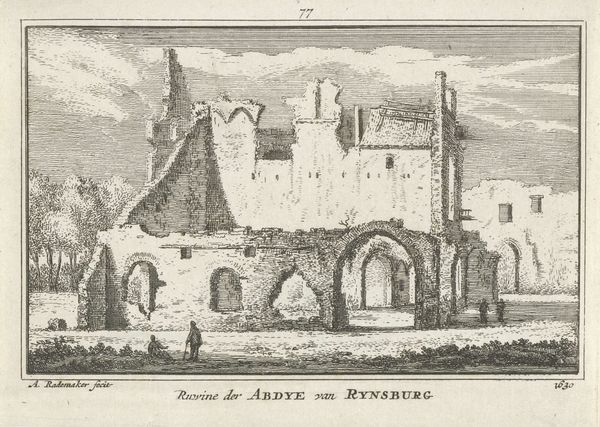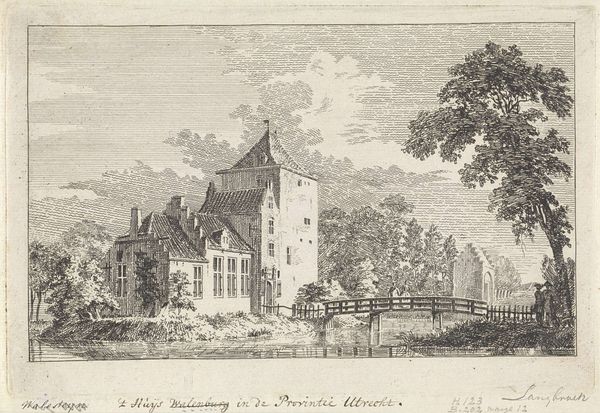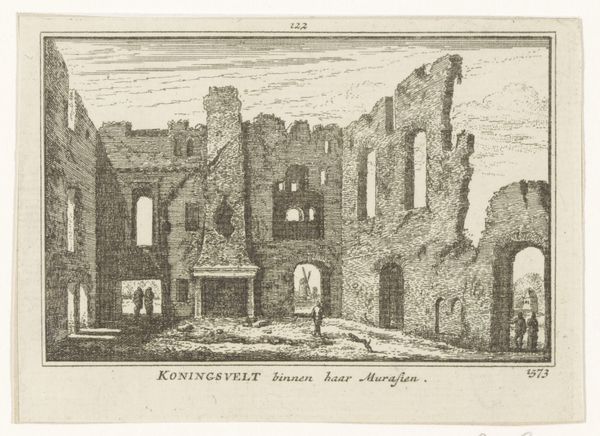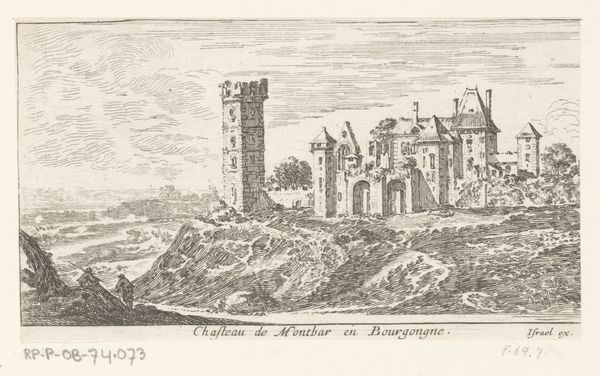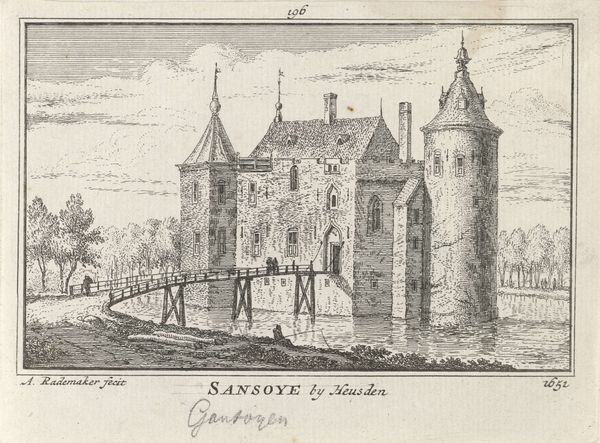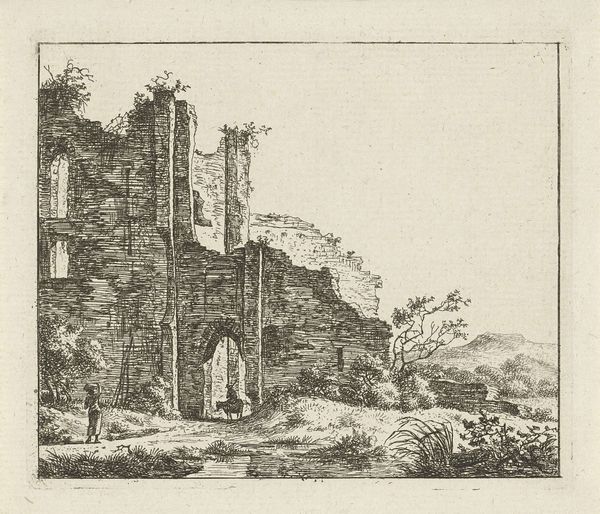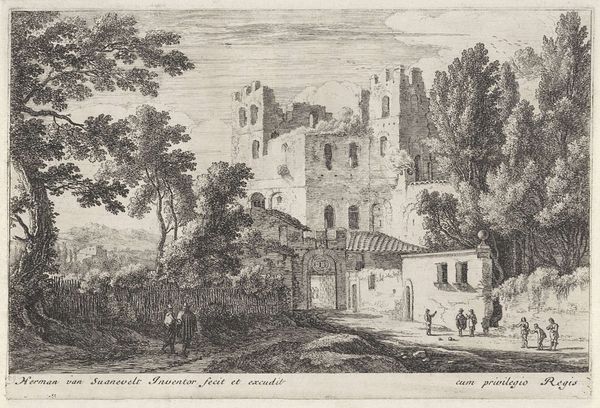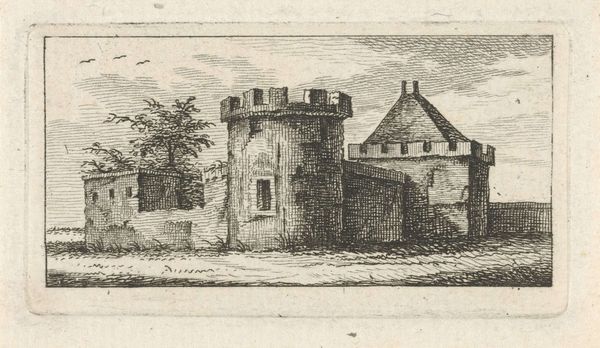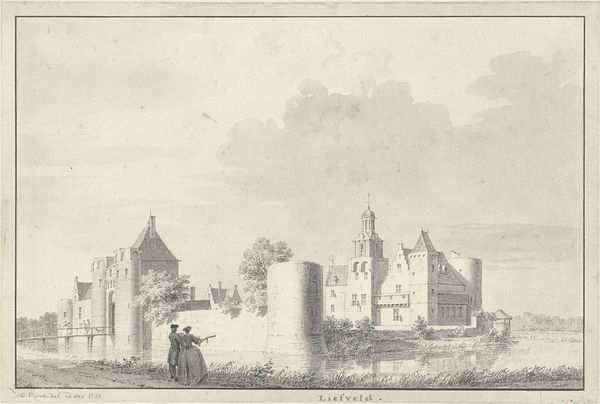
print, engraving
#
baroque
# print
#
landscape
#
cityscape
#
engraving
Dimensions: height 80 mm, width 115 mm
Copyright: Rijks Museum: Open Domain
Curator: We're looking at "Gezicht op de ruïne van de abdij te Rijnsburg, 1630" which translates to "View of the Ruins of Rijnsburg Abbey, 1630." It's an engraving by Abraham Rademaker, made sometime between 1727 and 1733. Editor: It’s stark. That fine line work gives the scene an almost clinical feeling, despite depicting something so clearly crumbling and decaying. The balance of light and shadow emphasizes the fragmented architectural structure. Curator: Indeed. Rademaker was known for his meticulous documentation of landscapes and cityscapes, capturing the Netherlands as it existed then. Prints like this one became incredibly important visual records, spreading knowledge of places far and wide. Editor: The emptiness, those stark open arches – it's as much about what's missing as what's there. The structure looms, yet we're compelled to think about absence and change. It suggests time's relentless impact. There is almost nothing holding these stone walls up! Curator: That's what's so striking about Rademaker's work. While seemingly objective, the careful composition shapes our understanding of the subject. Note the positioning of figures in the foreground; they're minuscule in comparison to the ruin. The scale highlights human transience. Editor: Precisely. It creates an inescapable visual tension – this man-made structure returning back to nature. The contrast is heightened through that intricate baroque style against the humble reality of an abbey. A bit self-important maybe? Curator: Well, the Baroque prioritized ornate grandeur, often associated with power and authority. This depiction is much simpler. That could have to do with printmaking as his medium, a historically popular art that allowed him to cater to larger audiences interested in picturesque landscapes of the region. It democratized viewing, if you will. Editor: I see what you mean; this visual study does reveal tensions of fleeting power when even the seemingly eternal eventually erodes, returns, decomposes, revealing nature’s persistent claim. Food for thought. Curator: Yes, it's about viewing not just the image itself, but also its place within a broader social, historical, and aesthetic narrative. Editor: Quite right. Rademaker's careful etching offers an engaging look, beyond aesthetics alone, but to meditate on existence and impermanence.
Comments
No comments
Be the first to comment and join the conversation on the ultimate creative platform.
